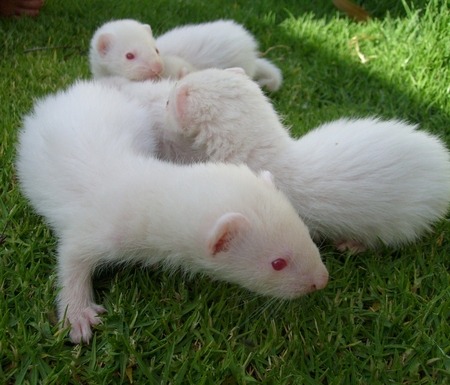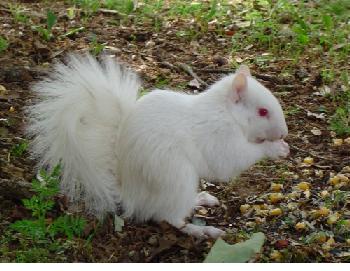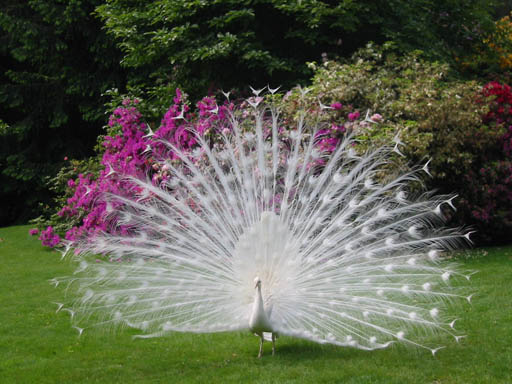|
|
|---|
Saturday, January 22, 2011
Most people think that penguins live in cold places like Antarctica, and not in warm places like Peru. And they think that was especially true back millions and millions of years ago, when the whole earth was lots warmer than it is now, and the air-conditioner hadn't been invented yet. So that is why scientists were shocked in 2005 when they found some fossils of really, really tall penguins who used to live in the warm water near the equator.
The tallest penguin we have nowadays is the Emperor penguin, and it is 4.3 feet tall. But one of these fossil penguins was 5 feet tall and had a beak that was 7 inches long. This penguin is called Icadyptes salasi, and it lived about 36 million years ago. First it probably started out living near New Zealand, and then it sort of migrated north to the ocean near southern Peru.
The other penguin fossil that the scientists found in Peru was even older, like 42 million years old. In dog years, this would be 2 billion, 94 million years! Anyway, this penguin was called Perudyptes devriesi, and it was between 2.5 and 3 feet tall, which is about the same size as a King penguin is today. It may have started out living near Antarctica before it moved north.
Until these fossils were found, people had thought that penguins lived where it was pretty cold, at least until the earth cooled off to be the temperature it is now. Today you can find the Humbolt penguin living along the coasts of Peru, Ecuador, and Chile, but it is lots smaller than the two fossil penguins. Also there is a penguin called the Galapagos penguin, and it lives right on the equator. It is the only penguin that ever crosses over into the Northern Hemisphere, but only by a few hundred yards.
Okay, so what do we know about these extinct giant penguins besides the fact that they were really tall? Well, for one thing, we know they were probably really good swimmers, which is also true of penguins today. But the extinct penguins had flippers that still looked a little more like wings than the flippers of modern penguins do. And this is because they were still busy changing over from being regular birds that fly to being penguins that only waddle and swim.
The giant penguins probably ate lots of yummy fish, because it would be easy for them to catch and swallow fish with their big, long beaks. We don't know what color these penguins were, but I like to think they were black-and-white, like me.
I don't think I would like to meet either Icadyptes or Perudyptes because those big beaks make them look kind of fierce and scary, especially Icadyptes. And also their names are hard to spell. I hope that doesn't mean I am a bad little dog for saying that, but I am just being honest about how I feel!
 |
| Icadyptes salasi |
The tallest penguin we have nowadays is the Emperor penguin, and it is 4.3 feet tall. But one of these fossil penguins was 5 feet tall and had a beak that was 7 inches long. This penguin is called Icadyptes salasi, and it lived about 36 million years ago. First it probably started out living near New Zealand, and then it sort of migrated north to the ocean near southern Peru.
 |
| A picture of Perudyptes that shows where the fossil bones fit. |
The other penguin fossil that the scientists found in Peru was even older, like 42 million years old. In dog years, this would be 2 billion, 94 million years! Anyway, this penguin was called Perudyptes devriesi, and it was between 2.5 and 3 feet tall, which is about the same size as a King penguin is today. It may have started out living near Antarctica before it moved north.
 |
| Perudyptes, Humbolt, Icadyptes |
Okay, so what do we know about these extinct giant penguins besides the fact that they were really tall? Well, for one thing, we know they were probably really good swimmers, which is also true of penguins today. But the extinct penguins had flippers that still looked a little more like wings than the flippers of modern penguins do. And this is because they were still busy changing over from being regular birds that fly to being penguins that only waddle and swim.
The giant penguins probably ate lots of yummy fish, because it would be easy for them to catch and swallow fish with their big, long beaks. We don't know what color these penguins were, but I like to think they were black-and-white, like me.
I don't think I would like to meet either Icadyptes or Perudyptes because those big beaks make them look kind of fierce and scary, especially Icadyptes. And also their names are hard to spell. I hope that doesn't mean I am a bad little dog for saying that, but I am just being honest about how I feel!
0 Comments:
Subscribe to:
Post Comments (Atom)















